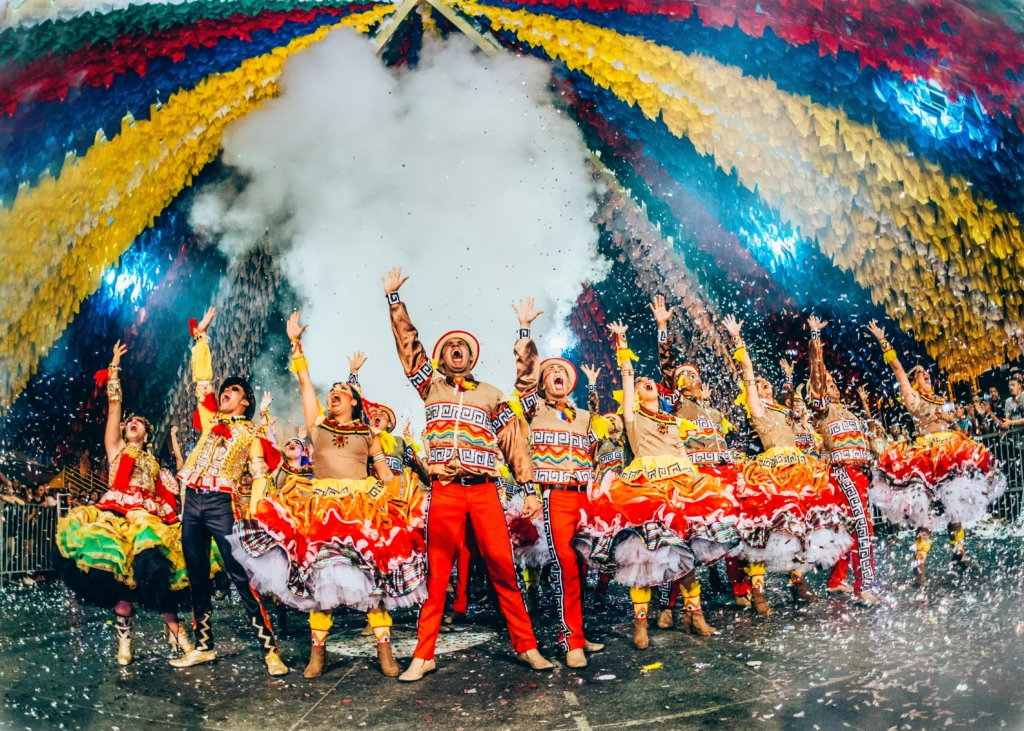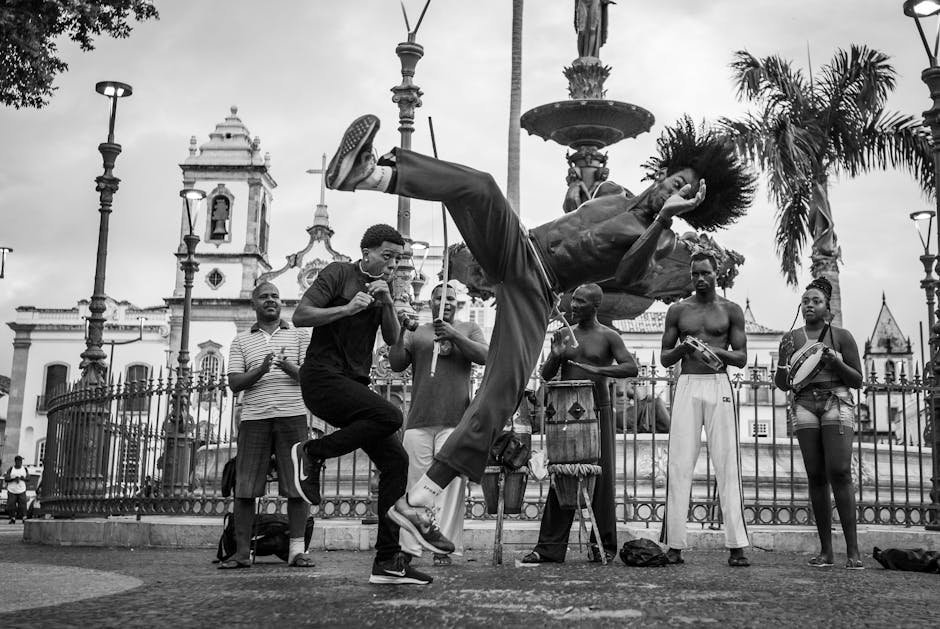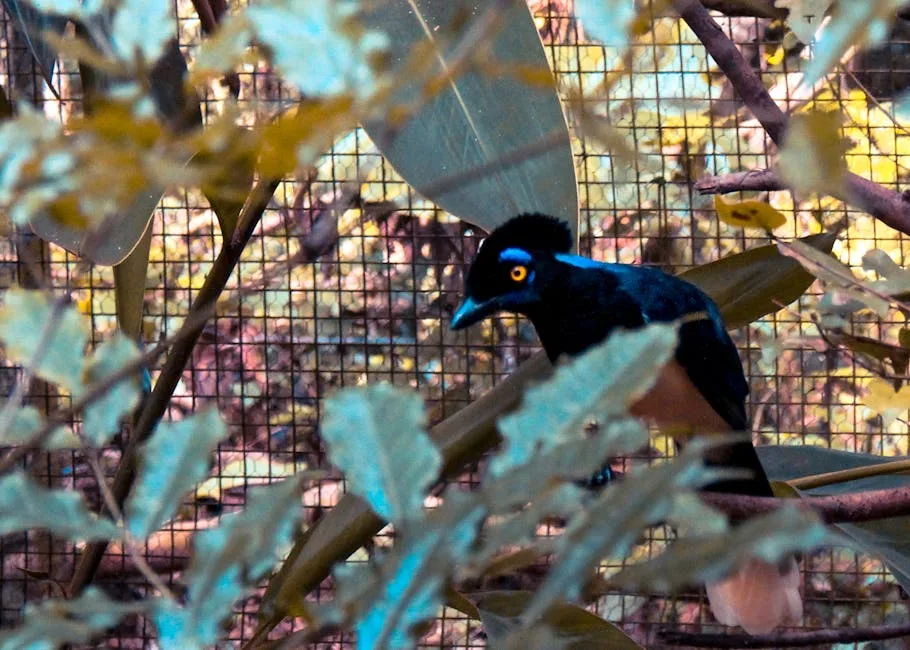June festivals, known as “Festas Juninas,” hold a significant place within Brazilian culture, reflecting the rich tapestry of traditions and communal values that shape the nation’s identity. These colorful celebrations coincide with the northern hemisphere’s summer solstice and are primarily held to honor Saint Anthony, Saint John, and Saint Peter. Originating from European, particularly Portuguese, agricultural festivals, these events promote community involvement and emphasize the importance of family, food, and music.
Throughout Brazil, the June festivals vary in their specific customs and expressions, deeply influenced by local cultures and historical contexts. Typically, these festivities include traditional food such as corn-based dishes, sweet treats, and hearty meals that reflect the agricultural abundance of the season. This facet of celebration highlights the connection to nature and the land, as many festivities revolve around the harvest period. Additionally, vibrant decorations adorn streets and homes, with brightly colored banners and lighting creating an atmosphere of joy and festivity.
The essence of June festivals is encapsulated in folk dances, music, and community gatherings, where friends and family come together to partake in the celebratory spirit. Popular dances, such as the “quadrilha,” are often the centerpiece of these festivals, showcasing vibrant costumes and inviting participation from attendees of all ages. The merrymaking allows individuals to express their cultural heritage while strengthening bonds within their communities, reinforcing the social fabric that is so vital in Brazilian culture.
In essence, the Festas Juninas not only serve as a tribute to local customs but also foster a sense of belonging and unity among participants. As these celebrations unfold, they become a vivid reflection of Brazil’s diverse traditions and the joyful spirit that characterizes this time of year.
The Significance of São João
São João, celebrated in various regions of Brazil, holds profound religious and cultural significance. This vibrant festival revolves around the honoring of St. John the Baptist, a prominent figure in Christianity known for his role in baptizing Jesus. Observed primarily during the month of June, São João reflects a blend of Christian tradition and local folklore, earning its place as a cornerstone of Brazilian cultural heritage.
One of the festival’s core elements is the religious rituals that pay homage to St. John. Devotees participate in various ceremonies, such as the lighting of bonfires, which symbolize the divine light brought by the saint. These bonfires also serve a practical purpose, as they represent the warmth of community coming together to celebrate. Individuals and families engage in prayers, seeking blessings from St. John for prosperity and health in the coming year.
Food plays a vital role in São João celebrations, with traditional dishes that reflect local culinary practices. Popular treats include pamonha (a sweet corn dish), canjica (sweet corn pudding), and quentão (a spiced hot drink). These delicacies not only satisfy the palate but also connect participants to the agricultural roots of the festival, emphasizing the importance of the harvest and seasonal produce. The joy of preparing and sharing these foods fosters a sense of community that is central to the São João experience.
Furthermore, the festival is characterized by lively music and dance that energizes the atmosphere. Traditional festivities often include forró, a popular musical genre and dance style that encourages widespread participation. The rhythmic sounds and exuberant movements bring people together, encouraging social cohesion and a shared sense of celebration. As participants engage in these activities, they contribute to the continued vitality of São João as a vibrant and cherished festival in Brazil.
Typical Foods of the June Festivals
The June festivals in Brazil are not only a celebration of music, dance, and culture; they are also a feast for the senses, especially when it comes to traditional foods. The culinary offerings during these festivities reflect the rich cultural tapestry of Brazil and are deeply rooted in local customs and ingredients. One of the most popular dishes during this time is pamonha, a corn-based delicacy made from fresh corn that is grated, mixed with sugar and cheese, and then wrapped in corn husks and boiled. The sweet and savory combination makes pamonha a staple at festivals.
Another traditional dish is canjica, a creamy dessert prepared from hominy corn cooked with milk, coconut, sugar, and spices. It is often served warm, embodying the hearty and comforting essence of Brazilian cuisine. The dish’s texture is smooth, and its flavor is rich, making it a favorite among festival-goers, particularly during the colder winter evenings that accompany June.
Milho verde, or green corn, is also a significant part of the June culinary landscape. This dish highlights the fresh corn harvested in June, often grilled or boiled, served with butter or salt. Its simplicity allows the natural sweetness of the corn to shine through, providing an enjoyable snack amidst the festivities.
For those with a sweet tooth, pé de moleque is a treat not to be missed. This traditional peanut brittle is made with roasted peanuts and caramelized sugar, creating a crunchy and satisfying sweet. Each bite encapsulates the essence of Brazilian flavors and adds to the celebratory spirit of the June festivals. Together, these typical foods not only nourish the body but also connect festival participants to their cultural heritage, making for an unforgettable experience.
Traditional Music and Dance
June festivals in Brazil are a vibrant celebration of local culture, where music and dance play a pivotal role in the festivities. Among the prominent music styles associated with these celebrations is forró, a genre that originated from the northeastern region of Brazil. Characterized by its lively and engaging rhythms, forró combines the sounds of the accordion, zabumba (a type of drum), and a triangle, creating an infectious beat that draws people onto the dance floor. The simple yet captivating melodies of forró not only provide entertainment but also serve to unite communities, fostering a sense of belonging and shared joy during the festivities.
Another integral aspect of the June celebrations is the quadrilha, a traditional folk dance that reflects the spirit of the seasons and community bonding. Originating from the European quadrille, it has adapted over time to incorporate Brazilian cultural elements. Participants dress in colorful costumes, often inspired by rural life, and form two opposing lines to engage in a series of choreographed movements. The intricate steps and lively interactions during the quadrilha create an atmosphere of camaraderie that reinforces social ties among participants. The dance is commonly accompanied by forró music, enhancing the overall experience and ensuring a collective sense of pleasure during the celebrations.
The cultural significance of forró and quadrilha extends far beyond mere entertainment; they are crucial for the preservation of local heritage. Through these music and dance forms, generational knowledge is transmitted, allowing younger participants to connect with their roots. June festivals thus become a living tapestry of Brazil’s rich cultural history as communities come together to celebrate their identity through rhythm and movement, ensuring that these treasured traditions continue to thrive in modern times.
Regional Variations in Brazil
Brazil’s June festivals, known as “Festas Juninas,” significantly vary from one region to another, reflecting the country’s rich and diverse cultural tapestry. Each state boasts its unique traditions, customs, and festivities that create a distinctive celebration of the season. One of the most notable examples can be observed in Pernambuco, where the city of Caruaru holds the largest June festival in Brazil. This festival stands out for its vibrant music, especially the traditional forró dancing, and the prominent display of local handicrafts. The festival is a colorful showcase of rural life, where visitors can experience the authenticity of the Northeast region’s cultural heritage, including its food, music, and folkloric presentations.
In contrast, the festivities in São Paulo present a more urban spin on the traditional June celebrations. In the larger metropolitan areas, such as São Paulo city, the focus shifts to substantial public events, where the influence of various immigrant cultures blends with Brazilian traditions. These celebrations may incorporate modern elements such as live music from popular Brazilian artists, elaborate decorations, and food stalls offering a fusion of regional dishes and international cuisine. The welcoming atmosphere fosters a sense of community while honoring traditional June customs through the communal gathering of families and friends.
Other regions, such as the South and Central-West, also contribute their unique flair to June festivals. For instance, in Foz do Iguaçu, the festival may include fireworks and theatrical performances that draw inspiration from local folklore, while in Mato Grosso, there is a strong emphasis on the religious aspects of the celebrations. This diversity in festivities not only enriches the cultural experience but also showcases Brazil’s regional identities through the lens of a common celebration, making each event an exquisite reflection of local pride and traditions.
Attending a June Festival: What to Expect
Attending a June festival in Brazil is an exhilarating experience characterized by a lively atmosphere, traditional customs, and vibrant attire. Festivals such as Festa Junina are celebrated across the country, and each event showcases unique local traditions and cultural practices. As you approach one of these festivities, a shared sense of excitement fills the air, inviting attendees to immerse themselves in this rich tapestry of celebration.
The heart of a June festival lies in its unmistakable ambiance. As you walk through the festival grounds, expect to be welcomed by colorful decorations, lively folk music, and the scent of traditional foods wafting through the air. The lively dance performances, typically featuring vibrant local attire, create a festive atmosphere that encourages everyone to join in the fun. Embracing the celebratory spirit often involves participating in traditional dances such as quadrilha, which combine music and dance in a joyous display commonly seen during these events.
When it comes to attire, dressing appropriately is essential for fully experiencing the festival. Traditional clothing, which includes plaid shirts, straw hats, and colorful skirts, is often worn by attendees. While some choose to adhere strictly to these customs, others blend modern fashion with traditional elements, creating a unique personal style. This blend of old and new captures the essence of Brazil’s vibrant culture, allowing everyone to express their individuality while embracing the festive spirit.
Moreover, engaging with local customs can enhance your experience at a June festival. Participating in activities such as games, food tasting, and watching cultural performances provides deeper insight into Brazilian traditions and hospitality. Approaching locals with curiosity can lead to enriching conversations and introductions to various aspects of Brazilian culture. By immersing yourself in these experiences, you can appreciate these festivities beyond mere observation; you become a part of Brazil’s lively cultural landscape.
The Role of Community in June Festivals
June festivals in Brazil are quintessential examples of community spirit, showcasing the collaborative efforts of neighbors and families as they unite to celebrate their rich cultural heritage. These vibrant events are characterized by active participation, with local residents coming together to organize various activities such as traditional dances, music performances, and culinary showcases. The communal aspect of these festivals enriches the experiences of those involved, creating an environment that fosters social connections and collective joy.
Preparation for the June festivities often begins well in advance, with neighbors engaging in shared tasks that strengthen their relationships. From constructing festival decorations to preparing traditional foods, the collaborative efforts not only ease the logistical challenges but also cultivate a sense of belonging among participants. This cooperation is crucial, as it allows community members to pool their resources and talents, resulting in a more vibrant celebration that reflects their unified identity.
The joy of celebrating together is palpable during these festivals, as individuals immerse themselves in a multitude of shared experiences. The communal gatherings serve not only as a means of showcasing cultural traditions but also as a platform for reinforcing ties among community members. The interactions that occur during these events, from joyful dances in the streets to animated conversations over shared meals, embody the essence of familial and neighborly bonds, enhancing the overall festive atmosphere.
The involvement of families in these festivals further emphasizes the importance of togetherness, as they engage in activities that have been passed down through generations. Learning traditional dances or baking regional sweets as a family allows for a rich exchange of knowledge that perpetuates cultural legacies. In essence, the community plays a pivotal role in the successful execution of June festivals, transforming these events into an inclusive celebration that honors traditions while reinforcing the sense of unity among participants.
Impact of June Festivals on Tourism
Brazil’s June festivals are a significant driver of tourism, attracting both domestic travelers and international visitors from various corners of the globe. These vibrant celebrations, characterized by traditional food, lively music, and captivating dances, contribute to the country’s appeal as a desirable travel destination during this period. Festivals such as Festa Junina not only showcase local customs and heritage but also create an atmosphere that invites cultural exchange and interaction among participants.
The influx of tourists during the June festivals positively impacts local economies. Cities renowned for their festivities, such as Campina Grande in Paraíba and Caruaru in Pernambuco, witness a dramatic rise in tourism-related activities. This surge results in increased revenue for local businesses, including hotels, restaurants, and artisans. For instance, accommodations often reach full capacity as visitors flock to experience the unique atmosphere, leading to higher occupancy rates and an upswing in prices. Additionally, local vendors benefit from heightened demand for traditional crafts and culinary delights, further enhancing their livelihoods.
Moreover, June festivals play a crucial role in promoting Brazil’s rich cultural tapestry. As tourists engage with local traditions, they gain insights into the diverse heritage that defines Brazilian society. This experiential learning fosters mutual understanding and appreciation between cultures, reinforcing tourism’s role as a bridge linking people around the world. Tourists often share their experiences through social media, amplifying the reach of these festivals beyond national borders and generating interest in Brazil as a multifaceted travel destination.
In light of these factors, the impact of June festivals on Brazil’s tourism industry is undeniably profound, serving as a testament to the importance of cultural celebrations in promoting economic growth and fostering international connections.
Embracing Brazil’s June Festivities
Brazil’s June festivals represent a vibrant tapestry of cultural expression, community engagement, and joyous celebration. Throughout this blog post, we have explored the intricate ways in which these festivals embody the spirit of Brazilian life, showcasing diverse traditions that have been passed down through generations. From the lively bonfires and energetic folk dances to the culinary delights that characterize each festival, these events create not only a sense of belonging among participants but also foster community spirit.
June is a particularly significant month in Brazil, as it is steeped in rich folklore and regional customs that vary from one part of the country to another. The celebration of São João, for example, serves as a focal point for many festivities, highlighting the importance of unity and cultural heritage within local communities. As we have noted, the various June festivals are not merely events; they are crucial in preserving and promoting Brazilian culture, showcasing an array of music, dance, and gastronomy that captivates both locals and visitors alike.
Participating in these festivals offers an enriching experience, allowing one to engage with the vibrant cultural landscape of Brazil. Whether enjoying traditional dishes, joining in the lively dance, or simply soaking in the joyous atmosphere, attendees are invited to fully immerse themselves in the warmth of Brazilian hospitality. We encourage readers to consider attending these June festivals, as they provide an opportunity to celebrate life, forge connections with others, and appreciate the colorful traditions that define Brazil’s rich cultural fabric. In embracing these festivals, we not only honor the past but also play a role in ensuring their continuity for future generations to enjoy.






